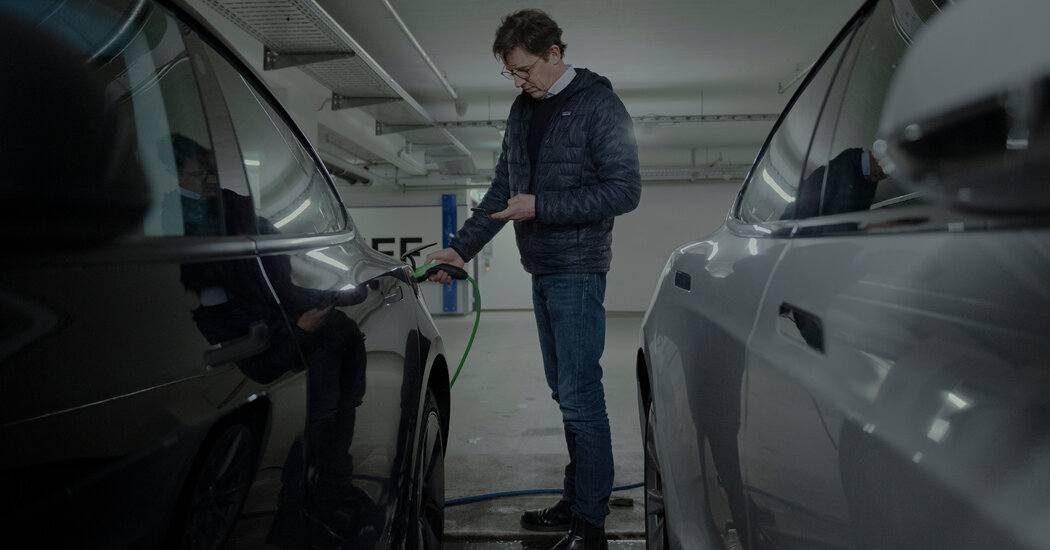This is the best summary I could come up with:
But new technology could turn those pricey devices into an asset, giving owners benefits like reduced utility bills, lower lease payments or free parking.
A large flat screen on the wall of the Munich offices of the Mobility House, a firm whose investors include Mercedes-Benz and Renault, illustrates one way that carmakers could profit while helping to stabilize the grid.
Renault, the French carmaker, is offering Mobility House technology to buyers of its R5 electric compact car, for which the company began taking orders last month.
Another challenge is that some U.S. utilities and the state regulators that oversee them prefer running centralized grids in which energy flows almost entirely in one direction — from power plants to homes and businesses.
Consolidated Edison, the utility that serves New York City and some of its suburbs, is exploring how managing charging times and using electric vehicles for storage could help it cope with the fast growth of battery-powered cars.
Con Ed supplies the power to a Bronx depot for New York City electric school buses, where Mobility House software allows more vehicles to use the facility.
The original article contains 1,232 words, the summary contains 185 words. Saved 85%. I’m a bot and I’m open source!
It could be good, but there is a conflict with one of the electric car hurdles: range anxiety. I use a level 1 charger at home which works fine for regular use - but it does take about 4 days to charge a nearly-depleted battery up to 80%. I’d be loath to give up energy that takes such a long time to get back. But this system would presumably require a level 2 charger, and that might make it ok. Still I can imagine objections over not having a car charged when you want to make a longer, last-minute trip, and over battery depreciation due to more cycling.
Yes, it requires a charger with the capability to do this kind of thing, typically a level 2 charger.
I’ll note that Ford has a system which simply pauses charging during times of high demand, rather than returning power to the grid.



